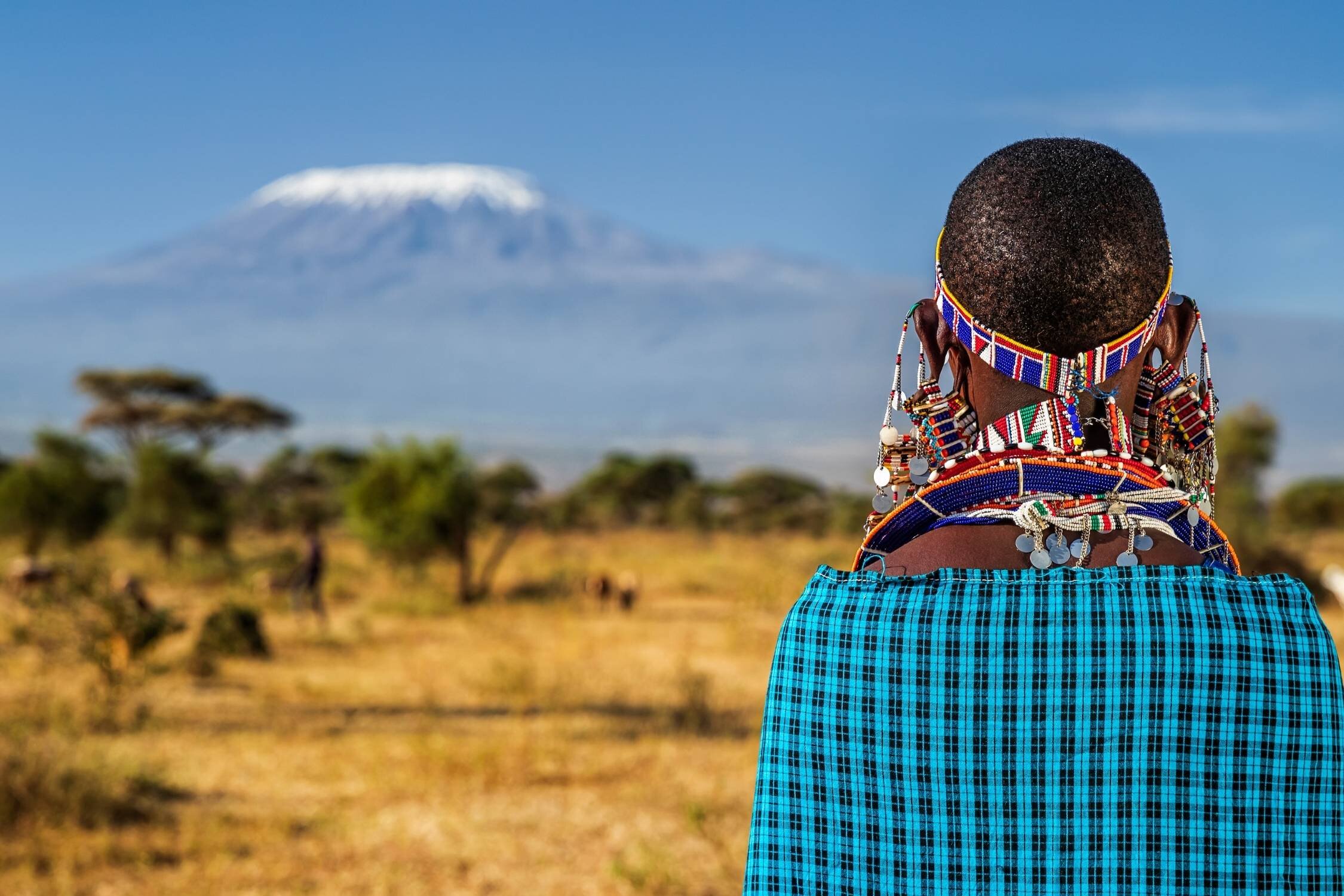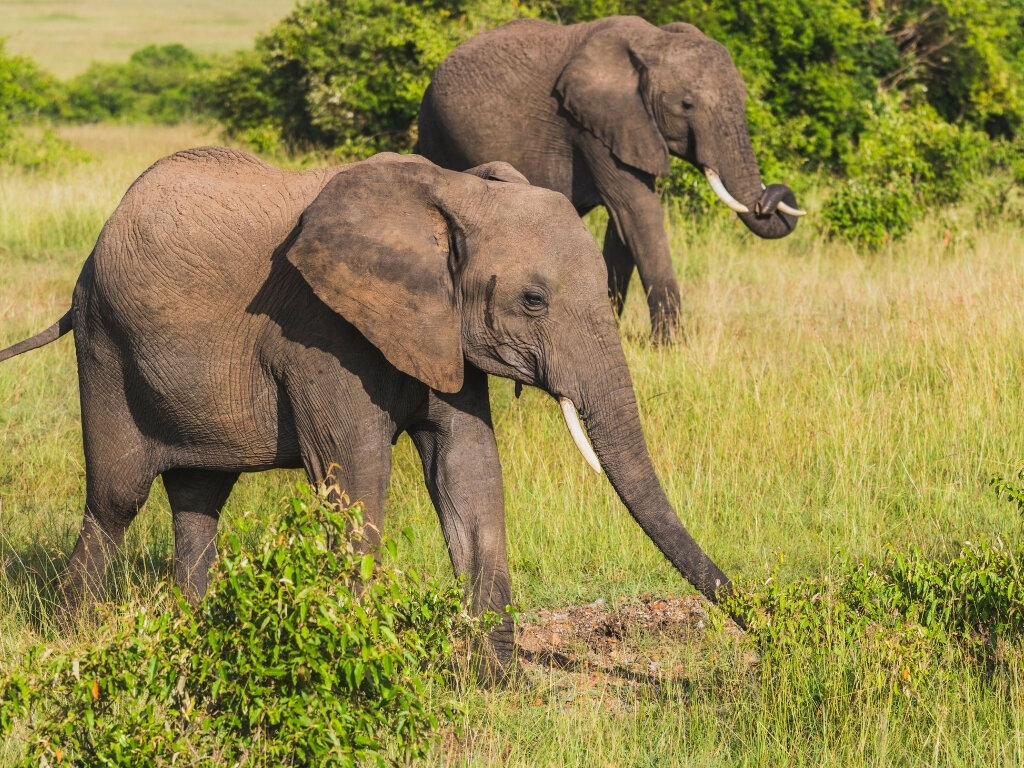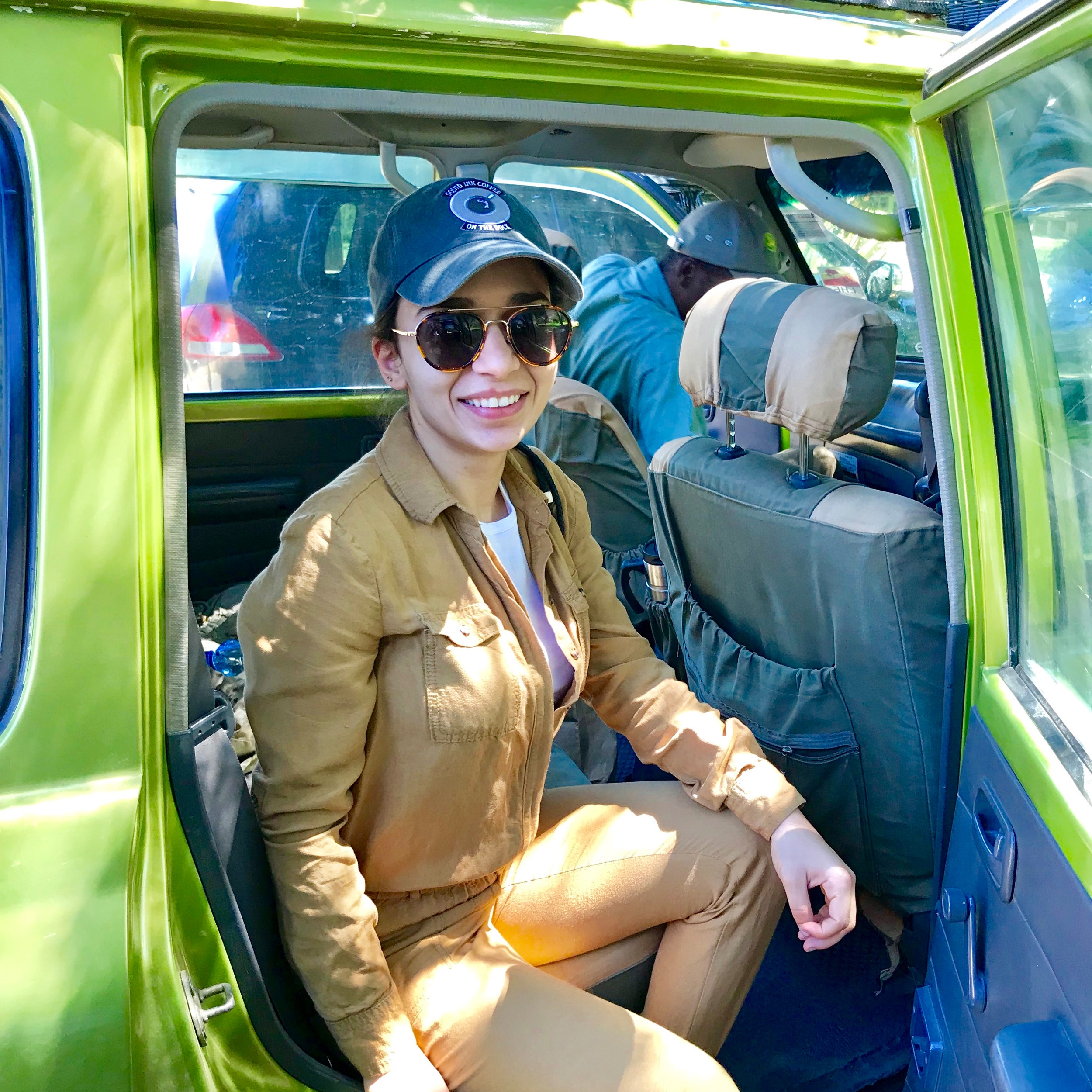Nomadic Tribes Of Africa | Maasai Tribe | Masai Mara Kenya
The first sight of the day was a Maasai warrior (a tribesman), moving among the bushes as the first rays of dawn came over the horizon. He was tall and his colorful shuka somehow perfectly blended with the green of the landscape. I recall feeling captivated by him, and wanting to follow and explore where his path would go that day. However, I stayed, anxiously waiting to start our first African safari. The same way he appeared, he vanished, into the wild, Fimbo (walking stick) in hand. I kept asking myself: Was it all a dream?
As it turned out, I was about to experience the most amazing and awakening trip of my life!
How to Get to Masai Mara?
We chose to visit Kenya in the middle of June for the milder weather and cheaper tickets, but we were so eager to experience Africa that any time of the year would have been perfect. We were lucky enough to arrive just in time for the start of the Great Migration… on my first trip to Africa, my first safari in the land of the Maasai tribe! What a dream!
Direct flights to Masai Mara and the Serengeti from Jomo Kenyatta International Airport, Wilson Airport (south of Nairobi) and Kilimanjaro International Airport are always an option. Be mindful of the luggage requirements, as most planes are very tiny and even a small carry-on suitcase might be difficult to fit. I of course overpacked, what a surprise!
How to go to Masai Mara from Nairobi?
We left Nairobi in the middle of the night and drove all the way to Masai Mara. It’s a long drive, but the experience of traveling through Kenyan countryside is like no other. We considered renting a car, but decided it was better to hire a guide for the day. The roads were surprisingly good for the most part, but one or two HUGE potholes made us glad we had an experienced navigator.
Masai Mara Kenya
An African Safari through Masai Land
Our day started around 6 am. We hadn’t even reached the park when I saw my first animals: a group of wild Maasai giraffes in the bushes on the roadside. I was speechless! I had seen giraffes before, but the color, the movement, and the freedom of this group felt completely different.
Seeing specific animals is never guaranteed, and you have to be lucky to experience the richness of this place at its fullest. I was definitely feeling very lucky that day!
Animals are normally more active during cooler times of the day. Make sure you take advantage of an early morning (dawn) or late afternoon/evening game drive!
We decided to do a full day safari instead. We spent the whole day at the Masai Mara game reserve, experiencing different game trails and even crossing the river towards the Serengeti. We also stopped to eat a delicious lunch in the wild under the shade of an Acacia tree! Half day safaris are also available.
Once inside the park, a group of monkeys greeted us almost immediately. It was a big family, and the tiniest of the monkeys decided to stop in the middle of the trail, assuring me that this would be an unforgettable day!
Buffalos, impalas, wildebeest and topi were among those I spotted in the first two hours of our drive. Not long after, hidden in the tall grasses, we spotted our first cheetah. It was peacefully resting on its side with its eyes closed, almost like it was inviting us to join and relax for a while. Tempting, but we had more animals to see!
The pack of lions came next. Three small cubs running and playing around, while the adults lounged and lazily watched to make sure our Land Rover didn’t get too close. Next, we went off the trail towards a herd of elephants we spotted at bottom of a hill. Hyenas and ostriches moved at their own pace all around us. We briefly stepped out of the car once or twice, but most of the time we flew across the landscape in our Land Rover, heads poking out of the open sunroof. Gazelles galloped alongside us as the sun warmed my face and the breeze caught my hair.
Things to Do in an African Safari at the Masai Mara National Reserve
Sunrise/Sunset Game Drives: Guided early morning or evening tours through the park to view the wildlife at the most active times. The experienced drivers will take you to the best places to see all manner of magnificent creatures in their natural habitat. Don’t miss the opportunity of experiencing a Masai Mara Game Drive
Dining in The Bush: Having breakfast, lunch or dinner in the bush is essential on any safari. Most camps will have this as an option, so be sure to set it up with the guides before arriving!
Hot Air Balloon Safaris: Flying over the Masai Mara or Serengeti and spotting animals from the air is definitely an experience you won’t want to miss, specially since many of the balloon safaris include champagne!
Flying Safari: Choose to go on a flying safari if you want to feel like Meryl Streep and Robert Redford in Out of Africa:
“glimpsing the world through God’s eye.”
Flying over Africa will be playing in the background!
Walking Safari/Trails: Only a few camp/lodges offer this option in Kenya, as most Kenyan reserves prohibit true walking safaris. If you wish to adventure on a walking safari, I recommend visiting Tanzania instead as they have a wider range of options there.
Maasai Village -Visit/Dining: To learn more about the Maasai tribe, the region home they call home, their culture and traditions, don’t miss a visit to the Maasai Village!
The Maasai Tribe
All we know about the Maasai people: one of the better known Nomadic Tribes of Africa
The Maasai tribe can be found throughout the border region of Kenya and Tanzania. They are a semi-nomadic people whose life is mostly centered around livestock. The Maasai women are also experts in handcrafted beadwork. Your trip won’t be complete without buying some gorgeous jewelry, especially one of the eye-catching bracelets! Pair it with a gorgeous straw hat and make it a staple in your vacation wardrobe the rest of the summer!
Above all, the Maasai people are respectful and protective of their lands and the wildlife living there. They are a peaceful and friendly tribe with fascinating traditions. Their burial methods are minimal (they practice “predator burial”) and have no graveyards or markers. This may be the reason that, unlike other areas like the Rift Valley where Australopithecus fossils have been discovered, almost none have been found in the Maasai region. The tribe doesn’t believe in an afterlife: for them, the journey of life is over when a person dies.
If you are interested in the Maasai people and the Maasai culture and want to see and experience it for yourself, don’t wait too long! When we visited, a new road was being built right into the heart of Masai land. This will inevitably bring with it slow but significant cultural loss, and many of the Maasai traditions may be replaced with technology and modernization. The people we spoke with had mixed opinions: some thought the Maasai Tribe would benefit from increased access to supplies and medical treatment, while others lamented the loss of traditional lifestyle they know will come. Either way, it was clear things will eventually change, so I recommend visiting the Masai Mara soon if you want to see and live the full authentic experience.
The things I learned visiting Masai Mara National Reserve and meeting the Maasai People
We loved visiting Masai Mara and especially talking to the Maasai people! We learned not only about the Maasai culture and the wildlife (Masai Mara Kenya has some of the best wildlife in all of Africa!) but also educated ourselves on the efforts that the Kenyan government and community make to protect their animals.
In Masai Mara, Kenya, the amazing natural resources and incredible wildlife are protected from poachers by the Maasai tribe themselves and by park guards, who are paid with funds raised from admission fees. So, that somewhat steep park admission fee is actually part of the reason the Masai Mara is such an amazingly well-preserved area.
While other countries like South Africa have more flexible laws, the Kenyan government (and the locals) have long taken a hardline stance in the fight to protect the wildlife population. Kenya is a leader worldwide in conservation and has banned hunting since 1977. Kenya recognizes the value of its stunning natural resources, and visitors like us should be extremely grateful that they have kept their country in such a pristine and protected condition.
Maasai Mara Travel Tips
If you are traveling in and out of Kenya and between Kenya and Tanzania, you’ll mostly need a visa (American and EU citizens, too!), which you can get online.
The yellow fever vaccination and some malaria pills are a must on this trip!
Driving between Nairobi and Masai Mara can be a little hectic, and the road conditions can change in short periods of time due to construction and renovations. Make sure you are an experienced chauffeur if you decide to do this drive solo.
Best time to visit Masai Mara: Ends of June through October( Big Migration)
Many lodges and camp vehicles include binoculars for their game drives, so you won’t necessarily need to bring your own pair.
Don’t forget to pack some essentials: bug repellant, sunscreen, and some boots.
Don’t miss the experience of meeting and learning about one of the most popular nomadic tribes of Africa: The Maasai.
Masai Mara Lodges and Camps
We stayed in Keekorok Lodge since it was perfectly located in the middle of the path of the migration. It’s one of the oldest lodges in Masai Mara, Kenya. It’s perfect for a traveler looking to get the full safari experience without having to spend 800+ USD a night.
Angama Mara is between the Great Rift Valley and the Masai Mara in Kenya. This is an exclusive lodge for that splurged traveler. Modern, luxurious accommodations and your own butler are among the services the Angama Mara offers.
For a luxurious yet more affordable lodge, head towards Lemala Kuria Hills in the Serengeti! You’ll enjoy a prime spot to view the world-famous wildebeest migration.
P.S. Almost all accommodations in both Serengeti and Masai Mara are all-inclusive.
Where to go after your Masai Mara Village Visit?
You can’t head to Kenya and Tanzania and not enjoy the area at its fullest! After a week/weekend-long safari, there is nothing better than heading towards the beach and enjoying a very well-deserved tropical vacation. No better place than Zanzibar to do that!
If, instead, you decide to spend a couple of days in Nairobi, having an eye-opening experience, before heading back home, then click here.
Check our African Destinations to know more about our adventures in the continent and get some travel inspiration!
Besitos from Masai Mara Kenya
Laura
Disclosure: We only recommend products we would use ourselves. All opinions are our own. This post may contain some affiliate links and if you choose to purchase some services or products using these links, we receive a small commission at no additional cost to you. We participate in the Amazon LLC Associates Program. Thank you for being part of our community and prance around the world with us!
MORE AFRICAN DESTINATIONS:














10 Unforgettable Things to do in Morocco: Sahara Desert, Marrakech, Fez, The High Atlas Mountains, Essaouira, Casablanca…